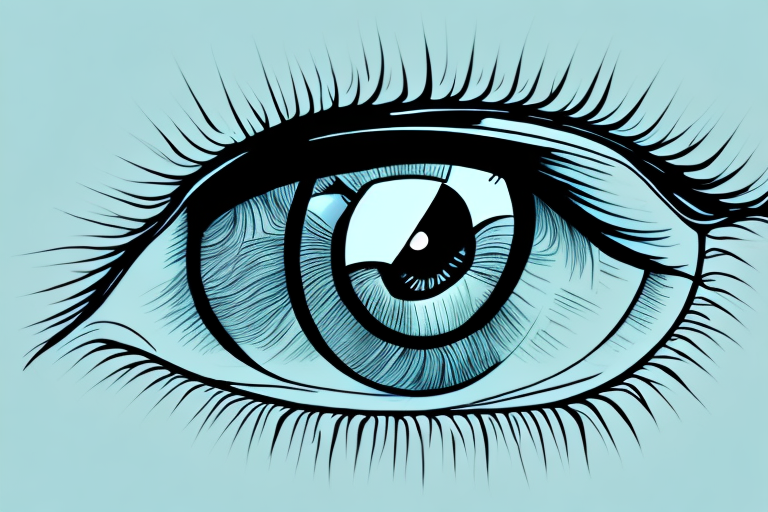If you are considering cataract surgery, it is important to understand the procedure, benefits, and recovery process. Cataracts are a common eye condition that affects people as they age, causing blurry or clouded vision. While glasses or contact lenses may help initially, cataract surgery is the only definitive treatment to restore clear vision. In this guide, you will gain a deeper understanding of cataracts and the surgery process, so you can make an informed decision about your eye health.
Understanding Cataracts and Their Impact on Vision
Cataracts are a common eye condition that affects millions of people worldwide. They can significantly impact your vision and need a cataracts surgery, but with proper diagnosis and treatment, they can be managed effectively.
What are Cataracts?
Cataracts occur when the natural lens inside the eye becomes cloudy and hinders your vision. They usually develop gradually and affect both eyes, although one eye may be affected before the other. As they progress, cataracts can cause difficulty reading, driving, and performing other daily activities.
It is important to note that cataracts are not a growth or film over the eye, as some people may believe. Rather, they are a clouding of the natural lens inside the eye.

Causes and Risk Factors of Cataracts
As we age, the proteins in the eye’s lens can break down and clump together, causing the lens to become cloudy. This is the most common cause of cataracts and is known as age-related cataracts. However, there are other risk factors that can contribute to the development of cataracts.
Genetics can play a role in cataract development, as some people may be more prone to developing them due to their family history. Certain medical conditions such as diabetes or high blood pressure can also increase the risk of cataracts. Lifestyle factors such as smoking or excessive UV exposure can also contribute to the development of cataracts.
Symptoms and Diagnosis of Cataracts
The most common symptoms of cataracts include cloudy or blurry vision, difficulty seeing at night, increased sensitivity to glare, and a decrease in color perception. These symptoms can develop gradually and may not be noticeable at first.
An eye doctor can diagnose cataracts during a comprehensive eye exam, which may include visual acuity tests, dilated eye exams, and measuring eye pressure. It is recommended that individuals over the age of 60 have a comprehensive eye exam at least once every two years to monitor for the development of cataracts and other eye conditions.
If you are experiencing symptoms of cataracts or have concerns about your eye health, it is important to schedule an appointment with an eye doctor as soon as possible. Early diagnosis and treatment can help prevent further vision loss and improve your overall quality of life.
Preparing for Cataract Surgery
Selecting the Right Surgeon
Choosing the right surgeon to perform your cataract surgery is crucial. After all, your eyesight is at stake. You want to ensure that you choose a surgeon who is not only experienced in performing the procedure but also takes the time to discuss your options and answer your questions. It’s important to feel comfortable with your surgeon and trust that they have your best interests in mind.
When looking for a surgeon, you may want to consider their qualifications and experience. Do they specialize in cataract surgery? How many procedures have they performed? You may also want to read online reviews or get referrals from friends and family who have had cataract surgery themselves.
Preoperative Assessments and Tests
Prior to surgery, your surgeon will perform several tests to determine the health of your eyes and help them plan the surgery. These tests are essential in ensuring that your surgery is safe and effective.
One of the tests that your surgeon may perform is measuring the length of your eye. This is important because it helps your surgeon choose the right power of intraocular lens (IOL) for your eye. They may also measure your corneal thickness to ensure that your eye is healthy enough for surgery.
Your surgeon will also assess your IOL options. There are several types of IOLs available, and your surgeon will help you choose the right one for your needs.

Choosing the Right Intraocular Lens (IOL) for You
One of the key decisions you’ll need to make before surgery is selecting the right IOL for your needs. There are several types of IOLs available, from standard monofocal lenses to premium multifocal lenses that can correct for astigmatism or presbyopia.
Your surgeon will discuss your IOL options with you and help you make an informed decision. They will take into account your lifestyle, visual needs, and any existing eye conditions you may have.
It’s important to note that while premium multifocal lenses may offer additional benefits, they may also come with a higher price tag. Your surgeon will help you weigh the pros and cons of each type of IOL and choose the one that is best for you.
Overall, preparing for cataract surgery involves more than just showing up on the day of the procedure. It’s important to take the time to choose the right surgeon, undergo preoperative assessments and tests, and carefully consider your IOL options. By doing so, you can ensure that your cataract surgery is safe, effective, and tailored to your unique needs.
The Cataract Surgery Procedure
An Overview of the Surgery Process
Cataracts are a common age-related condition that can cause cloudy, blurry vision. Fortunately, cataract surgery is a safe and effective procedure that can restore clear vision and improve your quality of life. In this section, we will provide an overview of the cataract surgery process.
Before the surgery, you will have a comprehensive eye exam to determine the severity of your cataract and ensure that you are a good candidate for surgery. Your surgeon will also discuss the risks and benefits of the procedure and answer any questions you may have.
On the day of the surgery, you will be asked to arrive at the surgical center several hours before the procedure. This will give you time to complete any necessary paperwork and undergo any pre-operative tests.
The surgery itself is relatively quick and painless, typically taking less than an hour to complete. During the surgery, the clouded lens is removed and replaced with an artificial lens, known as an intraocular lens or IOL. Your surgeon may use a local anesthetic to numb the eye and give you sedation to help you relax.
Types of Cataract Surgery Techniques
There are two main techniques used for cataract surgery: phacoemulsification and extracapsular surgery. Phacoemulsification is the most common technique used today and involves using ultrasound energy to break up the cataract and remove it from the eye. This technique requires a smaller incision and typically results in a faster recovery time. Extracapsular surgery involves removing the lens in one piece through a larger incision and is less commonly used today.
Your surgeon will determine which technique is best for you based on the severity of your cataract and other factors such as the shape of your eye.
Anesthesia and Sedation Options
Your surgeon will discuss the anesthesia and sedation options with you in advance, but most cataract surgeries are performed using topical anesthesia, which numbs the eye with eye drops, and IV sedation to help you relax. In some cases, general anesthesia may be used, especially if you have other medical conditions that make it difficult for you to remain still during the procedure.
Overall, cataract surgery is a safe and effective procedure that can restore clear vision and improve your quality of life. With modern techniques and anesthesia options, the procedure is relatively quick and painless, and most patients are able to return to their normal activities within a few days of the surgery.

Postoperative Care and Recovery
Having cataract surgery is a major step towards improving your vision and overall quality of life. While the procedure itself is relatively quick and painless, the recovery process is an important part of ensuring a successful outcome.
Immediate Post-Surgery Care
After your cataract surgery, you will be taken to a recovery area where you will be monitored for a short period of time. During this time, you may feel groggy or disoriented from the anesthesia. Your surgeon will provide you with detailed instructions on how to care for your eye in the hours and days following your surgery.
You will need to wear an eye patch for a few hours after your surgery to protect your eye and allow it to rest. Your surgeon will also prescribe eye drops that you will need to use to prevent infection and reduce inflammation. It’s important to follow these instructions carefully to ensure a smooth recovery.
Managing Pain and Discomfort
Most patients experience minimal pain or discomfort following cataract surgery. However, it’s not uncommon to experience some mild itching, soreness, or sensitivity to light. Over-the-counter pain relievers like acetaminophen or ibuprofen can usually manage any discomfort you may feel.
If you experience severe pain, sudden vision loss, or notice any unusual symptoms, it’s important to contact your surgeon right away. While complications are rare, it’s better to err on the side of caution and seek medical attention if you have any concerns.
Monitoring for Complications and Infections
While cataract surgery is generally considered safe, there are potential complications and infection risks associated with any surgery. Your surgeon will provide you with detailed instructions on how to care for your eye in the days and weeks following your surgery.
It’s important to attend all follow-up appointments with your surgeon to monitor for any issues that may arise. Your surgeon will examine your eye to ensure that it’s healing properly and that there are no signs of infection or other complications.
By following your surgeon’s instructions and attending all follow-up appointments, you can help ensure a successful outcome and experience the long-lasting benefits of improved vision. If you have any questions or concerns about your recovery process, don’t hesitate to reach out to your surgeon or eye doctor for guidance.
Other resources – When Does It Become Impossible to Treat Lazy Eye?

